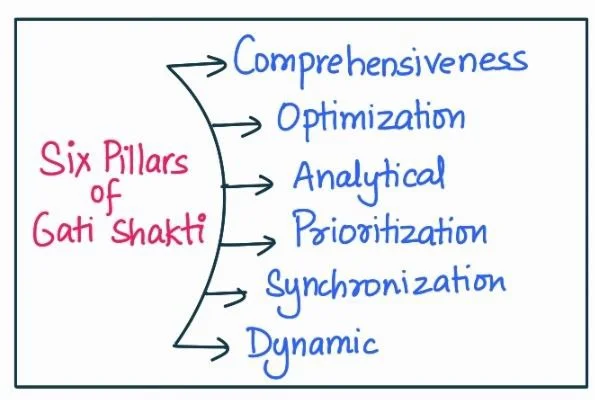Ans:
Approach:
- Introduction: Introduce the Gati-Shakti Yojana and its objective of improving multi-modal connectivity across India.
- Body: Discuss the need for meticulous coordination between the government and the private sector.
- Conclusion: Conclude, highlighting its potential impact on India’s infrastructure development and economic growth.
|
Introduction:
The Gati-Shakti Yojana, also known as the National Master Plan for Multi-modal Connectivity, is an ambitious initiative by the Indian government aimed at enhancing infrastructure development and providing seamless connectivity across various modes of transportation. The plan envisions a holistic approach to infrastructure development by integrating road, rail, air, and water transport networks, which is crucial for the nation’s economic growth and regional development.

Body:
Meticulous coordination between the government and the private sector is essential for the successful implementation of the Gati-Shakti Yojana:
- Policy formulation and implementation: A robust policy framework can help streamline processes, reduce bureaucratic hurdles, and facilitate the smooth implementation of projects.
- Public-Private Partnerships (PPPs): PPP models can play a vital role in mobilizing private investment, which can supplement public funds. The government must create an enabling environment to attract private investments, while the private sector should actively participate in the development of infrastructure projects in collaboration with the government.
- For instance, the Noida Yamuna Expressway is a shining example of a successful PPP project that has significantly improved connectivity in the region. The government must create an enabling environment to attract private investments, while the private sector should actively participate in the development of infrastructure projects in collaboration with the government.
- Technology and innovation: The private sector can contribute significantly to the Gati-Shakti Yojana by bringing in cutting-edge technologies, innovations, and best practices from around the world.
- Capacity building and skill development: The government and the private sector should work together to develop training programs and capacity-building initiatives that can equip the workforce with the necessary skills and expertise.
- Monitoring and evaluation: Both parties should collaborate to establish a robust monitoring and evaluation mechanism that ensures transparency, accountability, and timely completion of projects.
Conclusion:
The Gati-Shakti Yojana has the potential to transform India’s infrastructure landscape and boost economic growth. However, achieving the goal of seamless connectivity requires close coordination between the government and the private sector. Through collaborative efforts in policy formulation, public-private partnerships, technology adoption, capacity building, and monitoring, the Gati-Shakti Yojana can bring about the desired changes in India’s connectivity and infrastructure development.
